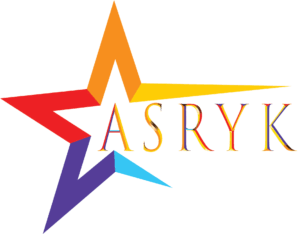Robotic Process Automation: A Digital Workhorse for the Modern Workplace
Robotic Process Automation: A Digital Workhorse for the Modern Workplace
The modern workplace is brimming with data and tasks. While technology has brought immense progress, it has also created an overwhelming burden of repetitive, rule-based work, often draining employee time and hindering productivity. This is where Robotic Process Automation (RPA) steps in, offering a powerful solution to streamline processes and empower human potential.
What is RPA?
RPA, also known as software robotics, utilizes software bots to automate specific, digital tasks traditionally performed by human workers. These “bots” emulate human actions by interacting with applications and systems, following pre-defined instructions to navigate interfaces, manipulate data, and complete tasks with accuracy and speed.
How Does RPA Work?
The core functionality of Robotic Process Automation revolves around three key aspects:
- Recording: Through user-friendly interfaces, users can record their actions while performing a specific task. The software captures these actions, like keystrokes and mouse clicks, as a script.
- Development: The recorded script can then be edited and enhanced. Users can define rules and conditions to guide the bot’s decision-making within the workflow.
- Execution: Once programmed, the bot can be deployed to run the task autonomously. The bot interacts with the designated applications, mimicking the recorded actions and completing the task independently.

Benefits of RPA:
RPA offers a plethora of advantages for businesses:
- Increased Efficiency: By automating repetitive tasks, Robotic Process Automation frees up valuable human resources, allowing employees to focus on higher-value activities requiring creativity, critical thinking, and problem-solving.
- Improved Accuracy: Unlike humans, software bots are not prone to fatigue or errors. They can perform consistent and accurate actions, minimizing the risk of human error and ensuring data integrity.
- Enhanced Productivity: RPA streamlines workflows and automates manual processes, leading to significant reductions in processing times and increased overall productivity.
- Cost Reduction: Automating tasks lowers operational costs associated with manual labor and improves resource allocation.
- Improved Customer Experience: Faster processing times and reduced errors translate to better customer service and satisfaction.
- Scalability: RPA solutions can be easily scaled to handle increased workloads or incorporate new tasks, fostering adaptability and growth.
Applications of Robotic Process Automation:
RPA has the potential to automate various tasks across diverse industries, making it a versatile tool. Here are some common applications:
- Data Entry and Processing: Automating data entry, updating databases, and managing spreadsheets.
- Customer Service: Answering FAQs, processing refunds, and managing email inquiries.
- Finance and Accounting: Generating invoices, processing payments, and reconciling accounts.
- Human Resources: Onboarding new employees, managing payroll processes, and processing benefits applications.
- Healthcare: Scheduling appointments, transcribing medical records, and processing insurance claims.

The Future of RPA:
As technology advances, RPA is poised for further development and integration with other emerging technologies. We can expect to see:
- Enhanced Intelligence: Integration of Artificial Intelligence (AI) capabilities will enable bots to learn, adapt, and make decisions based on changing environments, expanding their functionality.
- Cognitive Automation: Advanced bots equipped with natural language processing and computer vision capabilities will seamlessly interact with different systems and user interfaces, automating complex tasks.
- Greater Collaboration: Robotic Process Automation will increasingly collaborate with human workers, assisting and augmenting their efforts, fostering human-machine partnerships.
Advantages of Robotic Process Automation (RPA):
RPA offers a plethora of advantages for businesses, transforming the way they operate and interact with data. Let’s delve deeper into some key benefits:
1. Increased Efficiency and Productivity: Repetitive, rule-based tasks are the bread and butter of RPA. By automating these activities, human employees are freed from mundane work, allowing them to focus on higher-value tasks that require critical thinking, creativity, and problem-solving. This not only reduces employee workload and fatigue but also leads to significant improvements in overall productivity and output.
2. Enhanced Accuracy: Unlike humans who are susceptible to fatigue and distractions, software bots operate with unwavering precision and consistency. They follow pre-defined rules and instructions meticulously, minimizing the risk of errors and ensuring data integrity. This translates to fewer rework instances, improved data quality, and ultimately, better decision-making based on accurate and reliable information.
3. Cost Reduction: Automating tasks through Robotic Process Automation not only reduces the need for manual labor but also eliminates the associated costs. Savings can be accrued from decreased employee time spent on repetitive tasks, reduced errors requiring rework, and improved operational efficiency. This translates to a positive impact on the organization’s bottom line, freeing up resources for investment in other strategic areas.
4. Improved Scalability and Flexibility: RPA solutions are inherently scalable. As an organization’s workload increases or new tasks emerge, additional bots can be readily deployed to handle the expanded requirements. This flexibility allows businesses to adapt quickly to changing demands and ensure smooth operations even during periods of growth or fluctuation.
5. Enhanced Customer Experience: RPA’s impact extends beyond internal operations, positively influencing customer experience. By automating tasks like data entry, processing requests, and managing inquiries, RPA streamlines customer service processes, leading to faster response times, reduced errors, and improved overall customer satisfaction.
6. Improved Compliance and Regulatory Adherence: Robotic Process Automation can be programmed to follow specific rules and regulations, ensuring consistent and accurate adherence to compliance requirements. This is particularly valuable in sectors with stringent regulations, such as healthcare and finance, where data security and regulatory compliance are paramount.
7. Non-Disruptive Implementation: Unlike other automation solutions, RPA offers a relatively non-disruptive integration into existing IT infrastructure. It often utilizes existing interfaces and applications, minimizing the need for significant system overhauls and ensuring a smoother transition to automation.
8. Improved Employee Morale: By freeing employees from tedious tasks, RPA allows them to engage in more stimulating and challenging work that leverages their unique skills and expertise. This sense of purpose and fulfillment can lead to increased employee morale, motivation, and job satisfaction.
9. Improved Data Management and Analytics: Robotic Process Automation can be instrumental in streamlining data collection, processing, and analysis. By automating data entry and manipulation tasks, RPA ensures data accuracy and consistency, providing a reliable foundation for data-driven decision making and analytics.
10. Continuous Improvement: Robotic Process Automation offers valuable data insights into process execution. By analyzing bot activity, organizations can identify bottlenecks, improve process efficiency, and continuously optimize workflows for enhanced performance.
By harnessing these advantages, organizations can unlock the true potential of RPA, transforming the way they operate, interact with data, and achieve their business goals.
Conclusion:
In conclusion, Robotic Process Automation (RPA) marks a significant step towards a more efficient and productive future. It empowers businesses to streamline operations, reduce costs, and enhance accuracy, while simultaneously freeing up valuable human resources for more strategic endeavors. As Robotic Process Automation integrates with emerging technologies like AI and cognitive automation, its capabilities will expand, fostering human-machine collaboration and ushering in a new era of intelligent automation. Embracing RPA presents a strategic opportunity for organizations to remain competitive, adapt to evolving market demands, and unlock the full potential of their workforce in the digital age. However, it is crucial to acknowledge that successful RPA implementation requires careful planning, thorough selection of tasks, and ongoing monitoring. By harnessing the power of RPA responsibly and strategically, organizations can create a future of work where humans and machines collaborate seamlessly, driving innovation and sustainable growth.



